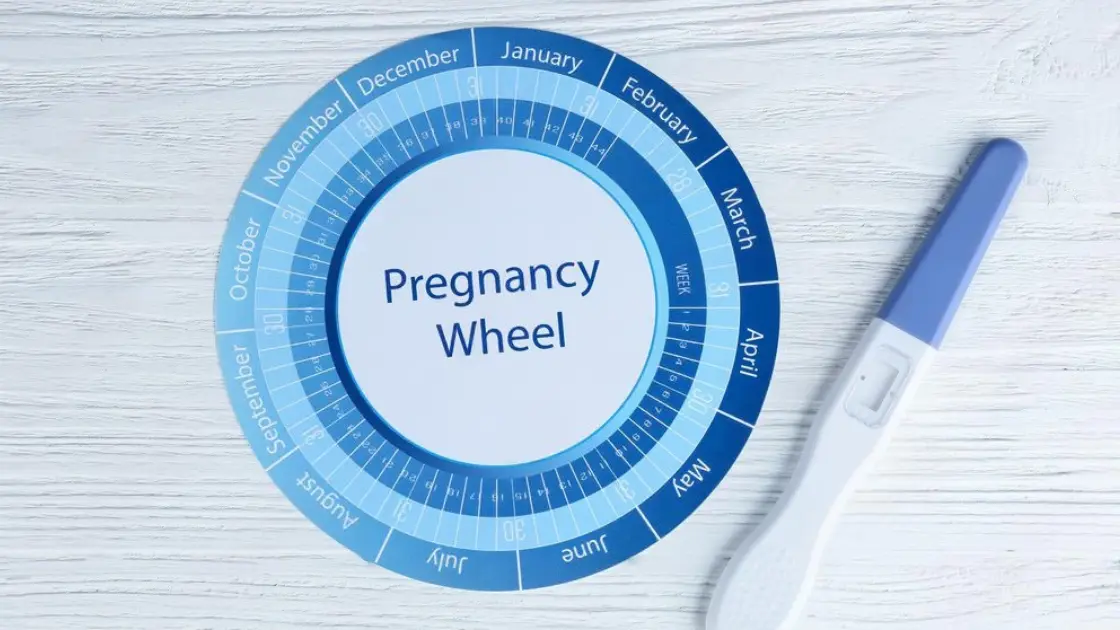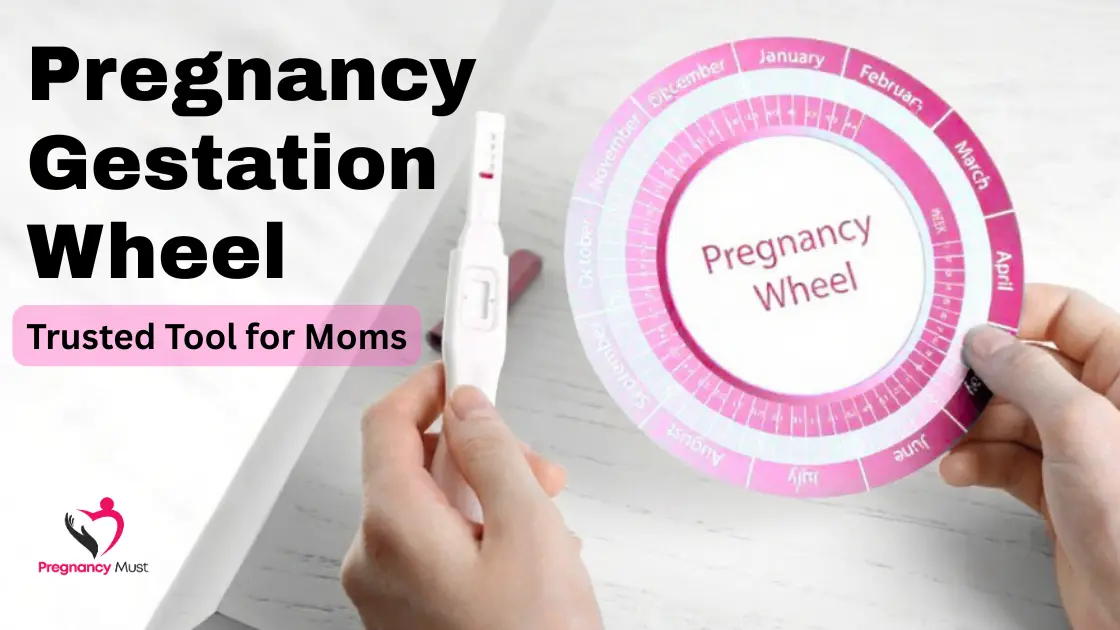The pregnancy gestation wheel is an essential tool that helps expectant mothers and healthcare providers determine due dates and monitor fetal development. It gives an easy but efficient means of monitoring pregnancy progress so that both the medical personnel and the patient would be informed and prepared all throughout the process.
Table of Contents
- Understanding the Pregnancy Gestation Wheel
- Why Use a Pregnancy Gestation Wheel?
- Pregnancy Wheel Gestational Age Explained
- Using a Pregnancy Wheel Calculator Gestational Age Tool
- Benefits of Digital Calculators
- Pregnancy Gestation Calculator Wheel vs. Ultrasound
- Limitations of the Pregnancy Gestation Wheel
- Digital Pregnancy Wheel Gestational Age Calculator
- Printable Pregnancy Gestation Wheel Options
- Key Pregnancy Milestones Tracked by the Wheel
- Pregnancy Gestation Wheel in Prenatal Care
- Customizing Pregnancy Wheel Calculators
- Advantages of the Pregnancy Wheel Calculator Gestational Age Tool
- Future of Pregnancy Tracking Tools
- FAQs About Pregnancy Gestation Wheel
- Conclusion: Pregnancy Gestation Wheel
Understanding the Pregnancy Gestation Wheel
A pregnancy gestation wheel (also known as a pregnancy wheel calculator gestational age tool) is a circular device used to estimate key pregnancy milestones. It works by using the first day of the woman’s last menstrual period to provide an estimated date of delivery (EDD) and the gestational age and other important information.
How the Pregnancy Wheel Works
The tool consists of two rotating disks:
- The outer disk displays calendar dates has an organization with a calendar date view, wherein days and months of the year are shown. This enables the user to compare specific dates, such as the first day of the LMP, with fetal development milestones.
- The inner disk highlights shows the milestones in foetal development as per the gestational weeks. The disk features little markers that say things like ‘heart beat’ and when you are in your first, second, and third trimester and the due date.
Through the alignment of the LMP with the inner-wheel LMP indicator, users can immediately know:
- Estimated Due Date – The wheel indicates the EDD assuming a 40 week gestation period from the LMP.
- Current Gestational Age – It indicates how many weeks and days have passed since the LMP, providing insight into the stage of pregnancy.
- Fetal Development Stages – The wheel outlines major milestones such as organ formation, heartbeat detection, trimester markers, and fetal movements, giving a clear picture of what to expect each week.
Why Use a Pregnancy Gestation Wheel?

Using a pregnancy gestation calculator wheel helps in:
- Tracking fetal growth – It allows users to monitor how the baby is progressing week by week, identifying when significant milestones like heartbeat detection or organ development occur.
- Planning prenatal appointments – Based on gestational age, healthcare providers can schedule ultrasounds, glucose screenings, and other critical checkups at the optimal times.
- Monitoring gestational milestones – From the end of each trimester to when the baby reaches full term, the wheel gives a clear timeline of what developmental changes are happening inside the womb.
- Reducing guesswork and anxiety – By providing reliable, visual estimates of pregnancy progress, the wheel helps both mothers and clinicians feel confident and informed, easing stress and uncertainty.
Pregnancy Wheel Gestational Age Explained
The pregnancy wheel gestational age helps determine the number of weeks a woman has been pregnant. Gestational age begins from the LMP, not the date of conception.
Why LMP Matters
- It provides a standard reference point – The first day of the last menstrual period (LMP) is a consistent, easily identifiable date that serves as a universal starting point for calculating pregnancy timelines.
- Ovulation typically occurs two weeks after LMP – Most women ovulate around 14 days after the beginning of their menstrual cycle. This makes the LMP a logical anchor point for estimating the conception window and fetal age.
- Most due date calculators are based on LMP – Because the exact date of conception is often unknown, medical professionals rely on the LMP to estimate the due date and track progress using standardized tools like the gestation wheel or digital calculators.
Using a Pregnancy Wheel Calculator Gestational Age Tool

Step-by-Step Guide
- Locate the LMP date – The process starts with determining the first day of your last menstrual period. This date is the baseline for all gestational age calculations.
- Align it with the indicator on the wheel – Rotate the inner or outer disk (depending on the wheel design) so that the LMP date lines up with the arrow or marker labeled “LMP” or “Start.” This syncs the calendar date with pregnancy weeks.
- Read the EDD and gestational age – Once aligned, the wheel will display the estimated due date (EDD), and you can also read the current gestational age by locating today’s date on the wheel. The corresponding value will tell you how many weeks along the pregnancy is, along with key fetal development information.
Benefits of Digital Calculators
Numerous online resources, such as the Pregnancy Wheel Gestational Age Calculator, provide:
- Instant results – By entering LMP the users are able to calculate anticipated due date and the gestational age literally in seconds.
- User-friendly interfaces – Even people who are not familiar with medical terminology can easily navigate these tools. They frequently have clear visual layouts, useful prompts, and drop-down calendars.
- Printable reports for medical records – After calculation, many digital tools provide downloadable or printable summaries. These reports can be shared with healthcare providers and added to prenatal records for accurate monitoring throughout pregnancy.
Pregnancy Gestation Calculator Wheel vs. Ultrasound
While a pregnancy gestation calculator wheel provides accurate estimations, ultrasound offers:
- More precision in dating, especially if LMP is unknown – Ultrasound measurements can more accurately assess the gestational age, especially in the first trimester, by examining fetal size and development.
- Visualization of fetal development – Ultrasound gives a real-time image of the fetus inside the womb, allowing healthcare providers to observe fetal position, movement, heartbeat, and physical growth.
- Measurement of fetal crown-rump length (CRL) – This is one of the most reliable indicators of gestational age during early pregnancy. CRL is the measurement from the top of the head (crown) to the bottom of the buttocks (rump), which helps in estimating how far along the pregnancy is.
When to Prefer Each Tool
- Use the wheel if LMP is known – If a woman clearly remembers the first day of her last menstrual period and her cycles are regular, the pregnancy wheel offers a fast and effective method to estimate the due date and track fetal development.
- Prefer ultrasound when LMP is uncertain or irregular – If the menstrual cycle is irregular or the exact LMP is unknown or unclear, an early ultrasound is a more reliable tool. It uses biometric measurements, such as the fetal crown-rump length (CRL), to provide a precise gestational age and estimated due date.
Limitations of the Pregnancy Gestation Wheel
- Doesn’t account for irregular cycles – The pregnancy wheel assumes a regular 28-day menstrual cycle. For women with irregular periods, the estimated due date and gestational age may be off by several days or even weeks.
- Less accurate than ultrasounds – While the wheel provides general estimates, it lacks the precision of an ultrasound scan, which can measure fetal growth and development in real-time using advanced imaging technology.
- Cannot predict complications – The wheel is a basic tool for dating pregnancies. It does not identify or anticipate any health conditions including gestational diabetes, preeclampsia or fetal anomaly, which involve clinical observation and testing.
Digital Pregnancy Wheel Gestational Age Calculator
Digital versions has increased accuracy, and convenience of use. The best ones are:
- Custom LMP input – he user will have the option of custom input of the specific first day of the last menstrual period to have a more personalized and accurate result disregarding a variation in the cycles.
- Advanced fetal growth tracking – Modern tools can chart the baby’s development over time, showing expected milestones and sizes week by week, which supports better planning and monitoring.
- Integrated appointment scheduler – Certain websites come with some appointment scheduling aspects that assist users to plan and manage a medical appointment such as ultrasound screen tests and glucose tests, as well as routine visits during pregnancy.
Printable Pregnancy Gestation Wheel Options
For hands-on users, printable wheels are available in various formats:
- PDF downloads – PDF files of gestation wheels are very easy to obtain, either by downloading them on medical websites or educational websites, and are easily printed at home to use, or utilised online, as a quick reference.
- Physician-designed templates – These are professionally created to ensure clinical accuracy and are often used in hospitals and maternity clinics for standardized tracking.
- Custom-branded clinic versions – Many healthcare providers and medical institutions customize gestation wheels with their logo, branding, and contact information, making them useful marketing tools while maintaining functionality for patient care.
Key Pregnancy Milestones Tracked by the Wheel
| Gestational Week | Developmental Milestone |
| Week 4 | Implantation completes |
| Week 8 | Heartbeat detectable |
| Week 12 | End of first trimester |
| Week 20 | Anatomy scan |
| Week 28 | Start of third trimester |
| Week 40 | Full term / Estimated due date |
Pregnancy Gestation Wheel in Prenatal Care
Pregnancy gestation wheel remains a standard at prenatal offices. It assists doctors.
- Schedule key checkups – By identifying gestational weeks, healthcare providers can plan vital prenatal appointments such as ultrasounds, blood tests, and glucose screenings at appropriate times during the pregnancy.
- Plan interventions – The wheel helps predict when certain health risks or developmental concerns are most likely to arise, allowing doctors to prepare timely interventions or treatments.
- Track abnormal growth patterns – In case the size of the fetus does not correspond to the normative progression at a certain week, the wheel may trigger an additional test that will exclude potential issues like intrauterine growth restriction (IUGR) or gestational diabetes.
Customizing Pregnancy Wheel Calculators
Healthcare apps allow users to customize their experience:
- Add cycle length – Users can input their actual menstrual cycle length (whether shorter or longer than the standard 28 days), which improves the accuracy of estimated due dates and gestational ages.
- Adjust for IVF or donor egg scenarios – Special calculators may take into consideration the known dates of embryo transfer, ovulation induction and provide specific estimates adapted to the assisted reproductive technologies.
- Sync with calendar – Some apps integrate with smartphone or digital calendars, automatically scheduling reminders for prenatal appointments, tests, and trimester transitions to help expectant mothers stay organized and on track.
Advantages of the Pregnancy Wheel Calculator Gestational Age Tool

- Quick reference for doctors and midwives – The wheel offers an immediate, visual method for estimating due dates and fetal age, enabling healthcare professionals to make fast, informed decisions during consultations.
- Empowering tool for mothers – With easy-to-understand visuals and clear timelines, the wheel helps expecting mothers take a more active role in understanding their pregnancy and following their baby’s development.
- Facilitates early prenatal planning – The wheel helps in factoring in the prenatal healthcare appointments, be it the pre-screening tests to the delivery schedules, nothing is omitted since gestational milestones are outlined.
Future of Pregnancy Tracking Tools
With AI, future pregnancy wheel calculator gestational age tools may:
- Predict labor patterns – Advanced algorithms may analyze patterns in uterine contractions, maternal symptoms, and previous birth data to forecast the likely onset and duration of labor.
- Monitor fetal heart rate remotely – Smart devices may continuously track fetal heart activity through non-invasive sensors, sending real-time data to healthcare providers for proactive monitoring and early detection of issues.
- Integrate with wearable tech – Gadgets such as smartwatches and stomach bands might harmonize with gestation monitoring app, seamlessly provide up-to-date updates in fetal growth, maternal vital signs and any medical milestones.
FAQs About Pregnancy Gestation Wheel
What is a pregnancy gestation wheel?
A circular tool used to calculate gestational age and due dates based on the LMP.
Can I trust a pregnancy wheel calculator gestational age tool?
Yes, especially if your cycle is regular and you know your LMP.
Is a pregnancy wheel better than an ultrasound?
It’s useful early on, but ultrasound offers more precision.
Where can I find a printable pregnancy wheel gestational age calculator?
Many medical websites and clinics offer free downloads.
How accurate is the pregnancy gestation calculator wheel?
As a rule, precise to several days, when it has a cycle of 28 days, and LMP is known.
Conclusion: Pregnancy Gestation Wheel
The pregnancy gestation wheel is one of the long-standing devices used in maternity care. As a future mother or a practitioner, you need to make sound decisions timely with the help of a pregnancy calculator wheel gestational age solution. SIt is no longer a friction to check your milestones during pregnancy since you could have a copy in digital format which is reprintable.
Explore more on Pregnancy Must –
